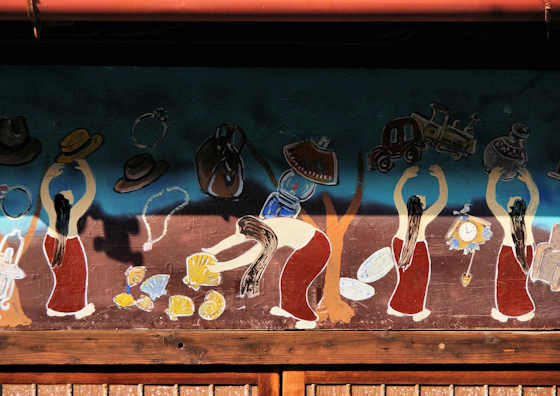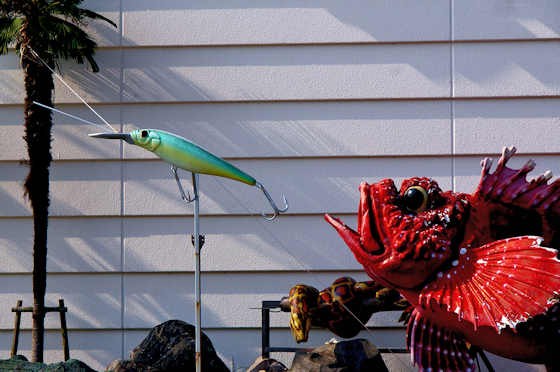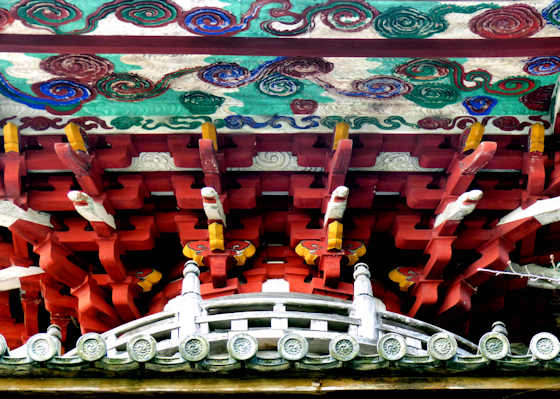Sunday, April 24, 2022
Choanji Flower Temple
Friday, April 22, 2022
Onigami Shrine Another Origin of Susano
Onigami Shrine
Not far from here is Inada Shrine, dedicated to the "princss# that Susano saves from the fearsome 8-headed serpent Yamat no Orochi. A little further downstream is a shrine dedicated to her parents, and several spots on the river are said to be the lair of Orochi.
If you draw a line roughly West from here to the shrines around Karashima Island, and another line North to where Matsue now sits, then in the land between those two lines are all the major shrines to Susano..... Susa, Suga, Yaegaki, Hinomisaki, and of course Izumo Taisha, which switched from Susano to Okuninushi just over 400 years ago. There are also a whole slew of smaller, mountain shrines dedicated to Susano, like Karakama Shrine.
Sunday, April 17, 2022
Things Noticed Along the Way
Along The Way
After visiting the third temple of the day, Zenrakuji, the route heads into Kochi City, the first big city since starting out in Tokushima 15 days ago. I visited about a dozen shrines on day 15, and I will cover them in future posts.
Labels:
goodsfromjapan,
henro
Thursday, April 14, 2022
Daihoji Temple 44 on the Shikoku Ohenro Pilgrimage
Daihoji Temple 44
 |
| Daihoji Temple 44 |
The path through giant trees up to the temple showed footprints of two people who had preceded me that morning. There are very few walking pilgrims in the winter months, for obvious reasons, but walking the pilgrimage in that season has its own rewards.
According to the founding legend, a monk from Paekche left a statue of Kannon on the mountain in the 7th Century. It is not clear if it was a Korean monk or a Japanese monk who had returned from studying in Paekche. I suspect the former.
In 1934 a small statues of Kannon was excavated from under a 1,000 year old tree along with more tan 100 stones inscibed with the Lotus Sutra. Sutra burials such as this were common in the late Heian and earky kakakura periods. This statues is now enshrined in the temple.
Visiting this deserted and snowy temple in the golden light of early morning was a wonderful experience.
Monday, April 11, 2022
To The Source
Gonokawa River to the source
Due to the travel restrictions caused by the pandemic of recent years I decided to start another walking project locally. My intention is to walk from the mouth of the Gonokawa River to the source, and then back along the opposite bank. The Gonokawa, the longest river in Western Honshu, is 194 kilometers long, yet its source on Mount Oasa is a mere 40 kilometers as the crow flies. It meanders along a great curve passing through Miyoshi, the only inland city in Hiroshima.
Sanin Line Railway Bridge
Slightly upstream is the Sanin Line Railway Bridge. This was opened in 1918 and built of American steel. It is the longest iron bridge on the San-in Line, and the oldest existing bridge on the river.Thursday, April 7, 2022
Gardens at Yakumo Honjin
Yakumo Honjin 八雲本陣
Monday, April 4, 2022
Kumadaniji Temple Revisited
Kumadaniji Temple 熊谷寺
It is temple number 8 on the Shikoku Ohenro pilgrimage, but I was revisiting it on day 2 of my walk along the Shikoku Fudo Myoo pilgrimage which followed a similar route for the first day and a half.
A statue of Bishamointen, another of the Shitenno, at Kumadaniji Templenin Tokushima.
Labels:
bishamonten,
jikokuten,
kobo daishi,
pagoda,
shikoku fudo,
shitenno,
temple
Subscribe to:
Posts (Atom)


































































